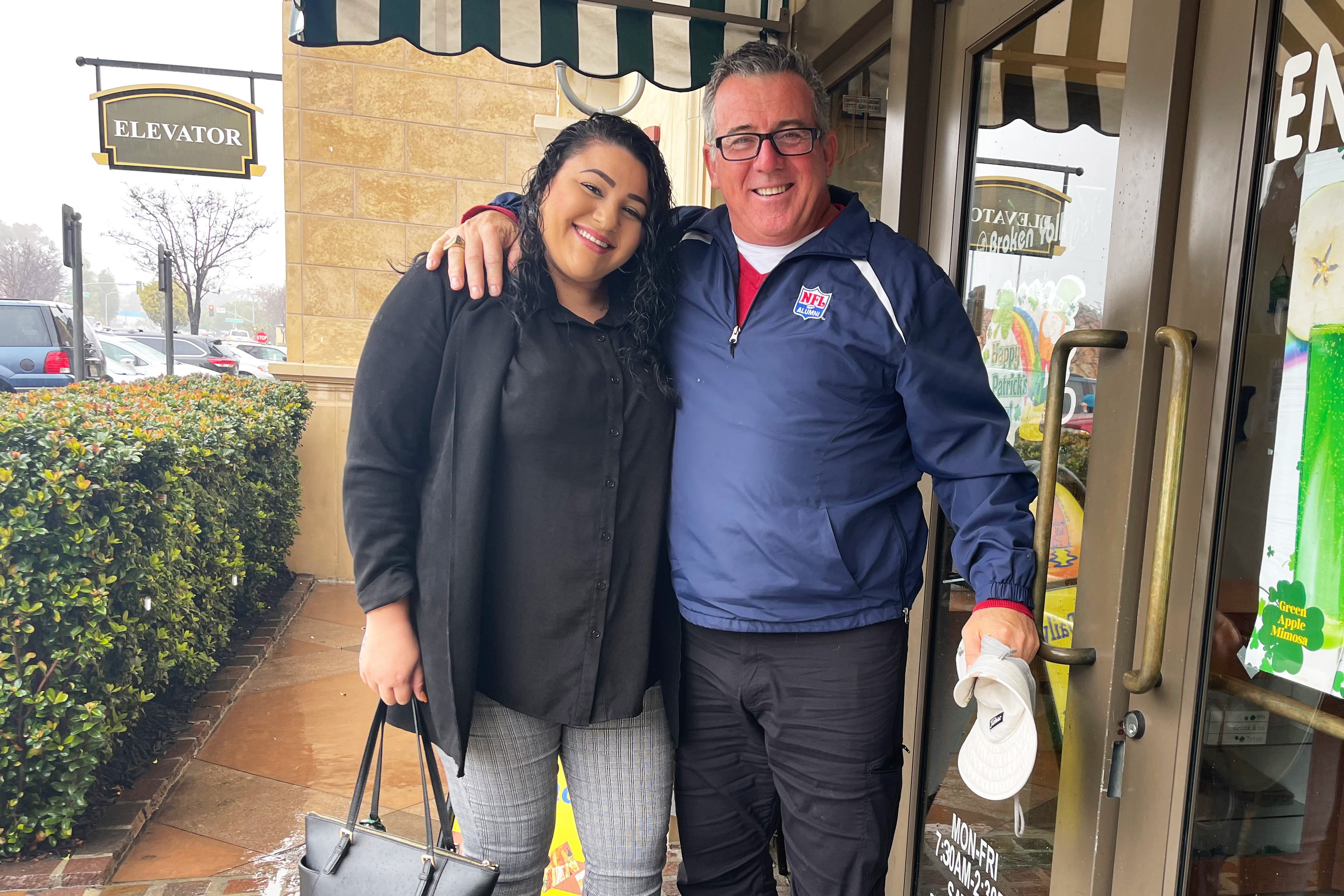SAN DIEGO — Sporting a bright smile and the polished Super Bowl ring he won as a star NFL player in the late 1980s, Craig McEwen doesn’t fit the archetype of someone teetering on the brink of homelessness.
Evicted from his San Diego County apartment last July, McEwen — who endured repeated concussions during his six seasons in the NFL — scoured housing listings for anything he could afford.
Working as a part-time groundskeeper at a golf course for $15 an hour, his frantic search turned up nothing. So, feeling overwhelmed by rents pushing $3,000 a month for a one-bedroom apartment, he made a plan: move into his truck or rent a storage container to live in — an alternative he turned to when he was previously homeless in 2004.
McEwen is hopeful that a massive health care initiative in California offering new, specialized social services will help him get back on his feet. He is one of nearly 145,000 low-income Californians enrolled in CalAIM, an endeavor Gavin Newsom, the state’s Democratic governor, is spearheading to transform its Medicaid program, called Medi-Cal, into a new kind of safety net that provides housing and other services for people who are homeless or at risk of becoming homeless and have complicating conditions like mental illness or chronic disease that can make it difficult to manage life.
California launched the initiative in early 2022, rolling it out quietly, with health insurers and community groups scrambling to provide social services and benefits that fall outside traditional health care. It’s a five-year, $12 billion social experiment that Newsom is betting will eventually cut soaring health care spending in Medi-Cal, the largest Medicaid program in the country with 15.5 million enrollees.
The state is contracting the work to its 23 Medi-Cal managed-care health insurance companies. They are responsible for delivering a slew of new benefits to the most vulnerable enrollees: not only those with housing insecurity, but also people with mental health or addictive disorders; formerly incarcerated people transitioning back to society; seniors and people with disabilities; children in foster care; and Californians who frequent hospital emergency rooms or are admitted often to short-term skilled nursing facilities.
While only a sliver of the state’s Medi-Cal patients are enrolled in CalAIM, tens of thousands of low-income Californians could qualify for the new benefits. They’re eligible for help in finding housing and for paying rental move-in costs like security deposits.
But the help goes beyond housing. The state is also providing the most at-risk patients with intensive case management, alongside pioneering social services — such as healthy home-delivered meals for diabetes patients and mold removal in homes of patients with severe asthma.
Top state health officials say that with such an ambitious program — using Medicaid to help solve homelessness and combat chronic disease — they expected the rollout to be bumpy. After 2026, when the initiative’s funding ends, the state plans to prove the experiment works and permanently adopt the benefits. Meanwhile, other states are closely watching California, hoping to learn from its successes and failures.
“California is a leader, and it’s always experimenting in new and interesting ways,” said Dr. Georges Benjamin, executive director of the American Public Health Association. “What it can do is provide proof of concept, and then this can grow to other states.”
Insurers, in essence, are building a new health care workforce, contracting with nonprofit and for-profit organizations to enroll the most vulnerable — and expensive — Medi-Cal patients. They’re hiring social workers and case managers to find those who rack up extreme health care costs in hospital emergency rooms, nursing homes, prisons, jails, and mental health crisis centers.
As Newsom sees it, the immense investment will pay off for taxpayers. Targeting people cycling in and out of costly institutions will reduce health care spending, he argues, while also helping people get healthy. State health officials say 5% of high-need Medi-Cal patients account for roughly half of all health care spending in the low-income health care program.
The most important currency in pulling off this massive health care experiment is trust. And that is being built on the ground, with community outreach workers scouring hospitals and homeless encampments, for example, to find those eligible for CalAIM.
The most at-risk Medi-Cal patients are being linked to specialized teams deployed under a new entitlement benefit at the heart of the initiative called “enhanced care management.” While other services like covering security deposits are optional, this is not. Health insurers are required to accept people who are most in need and provide a wide range of health and social services.
It can be simple things like arranging an Uber to get to a medical appointment or buying a computer for an enrollee looking for a job. Or purchasing a bike for a low-income kid. But it also involves intensive, one-on-one work that can require case managers to take patients to get an identification card, make nighttime phone calls to ensure patients are taking medications, and hunt down available apartments.
“This is the missing piece, and it’s the hardest work — the most costly work,” Newsom said in an interview with KFF Health News. “People on the streets and sidewalks, they’ve lost trust. They’ve become socially isolated. They’ve lost connection, and so developing that is so foundational.”
‘My Own Prison’
McEwen, who was a tight end for the NFL team now known as the Washington Commanders and later for the San Diego Chargers, was hailed as a “legacy.” But playing professional football took an extreme toll.
“My position was to block for the quarterback, and back in the day, you were allowed to hit people in the head,” McEwen said, recalling regular concussions on the field that he’d snap himself out of by sniffing ammonia packets. He helped lead the Washington team to a Super Bowl victory in 1987, but in the decades since, his health has deteriorated.
McEwen has struggled for years to find regular work while dealing with thoughts of suicide, anger, forgetfulness, and depression that he says stem from traumatic brain injuries sustained during his football career. At 57, he endures continual pain from ruptured disks in his neck and spine, along with shortness of breath from severe heart disease.
He’d holed up in his apartment for years, with curtains nailed to his windows, drowning his pain with alcohol. “I basically created my own prison,” he said.
After he was evicted last July, a longtime friend swooped in to let him stay temporarily in a spare bedroom at his family’s house just outside San Diego. But McEwen’s financial and emotional struggle to find stable housing hasn’t ended.
“We don’t call it fear. Us ballplayers, we call it excitement,” McEwen said on a rainy morning in early March, his eyes swelling with tears. “I’m excited. I know what’s at stake. My life is at stake.”
Housing instability is just one part of it. He’d often forget to take his medications for high cholesterol and clogged arteries. He felt paralyzing anxiety and his brain was so scrambled he’d miss important doctor appointments — a side effect, he said, of the concussions.
McEwen knew he needed help.
He’d learned from a friend that California was helping Medi-Cal patients with not just medical needs but also social services, and he started making calls, insisting on getting in. “I said wait, you’re giving people a coach? Someone who can make appointments for me and go to my doctor visits with me?”

Weeks after receiving his eviction notice, his Medi-Cal insurer, Molina Healthcare, connected him with a personal care manager, whom McEwen calls “my advocate, someone who can teach me how to do for myself and give myself a life worth living.”
But who gets in the program is often a roll of the dice, depending largely on which Medi-Cal insurance company a person is enrolled in. Persistence plays a big role.
Despite early glimmers of hope, the rollout has been chaotic. Providers on the ground scramble to find any available housing for enrollees. Groups implementing the initiative say inadequate funding and dire health workforce shortages have severely constrained their ability to serve all those in need. And enrollment by health insurers is uneven, with some quickly approving new benefits for their members while others are denied. Some insurers provide on-the-spot Uber rides for doctor appointments while others offer only a bus pass.
“What is being offered is insufficient, and this program is not set up to support those who are actually the most vulnerable and need the most intensive support,” said Nancy Behm, associate director of CalAIM for a San Diego nonprofit called People Assisting the Homeless, or PATH.
Operating under contracts with Blue Shield of California, Molina Healthcare, and Health Net, PATH launched intensive case management and housing services in January 2022. But it has since stopped providing intensive case management benefits largely due to a lack of sufficient funding to do the grueling work of connecting with homeless people living in encampments. “We’re hitting barriers on every front,” Behm said.
Newsom, with his soaring political ambitions, is promising to help the most vulnerable Californians. Termed out in 2026, speculation is mounting that the two-term governor is eyeing a presidential run, and he’s using health care as a core issue to elevate his national profile. In reality, his Medi-Cal initiative is falling far short.
“This is an extremely ambitious program, but it doesn’t come close to helping the entirety of the population it’s targeting,” said Doug Herman, who worked for former President Barack Obama and former Los Angeles Mayor Eric Garcetti. “This isn’t a policy solution big enough to really make a dent in homelessness.”
No Walk in the Park
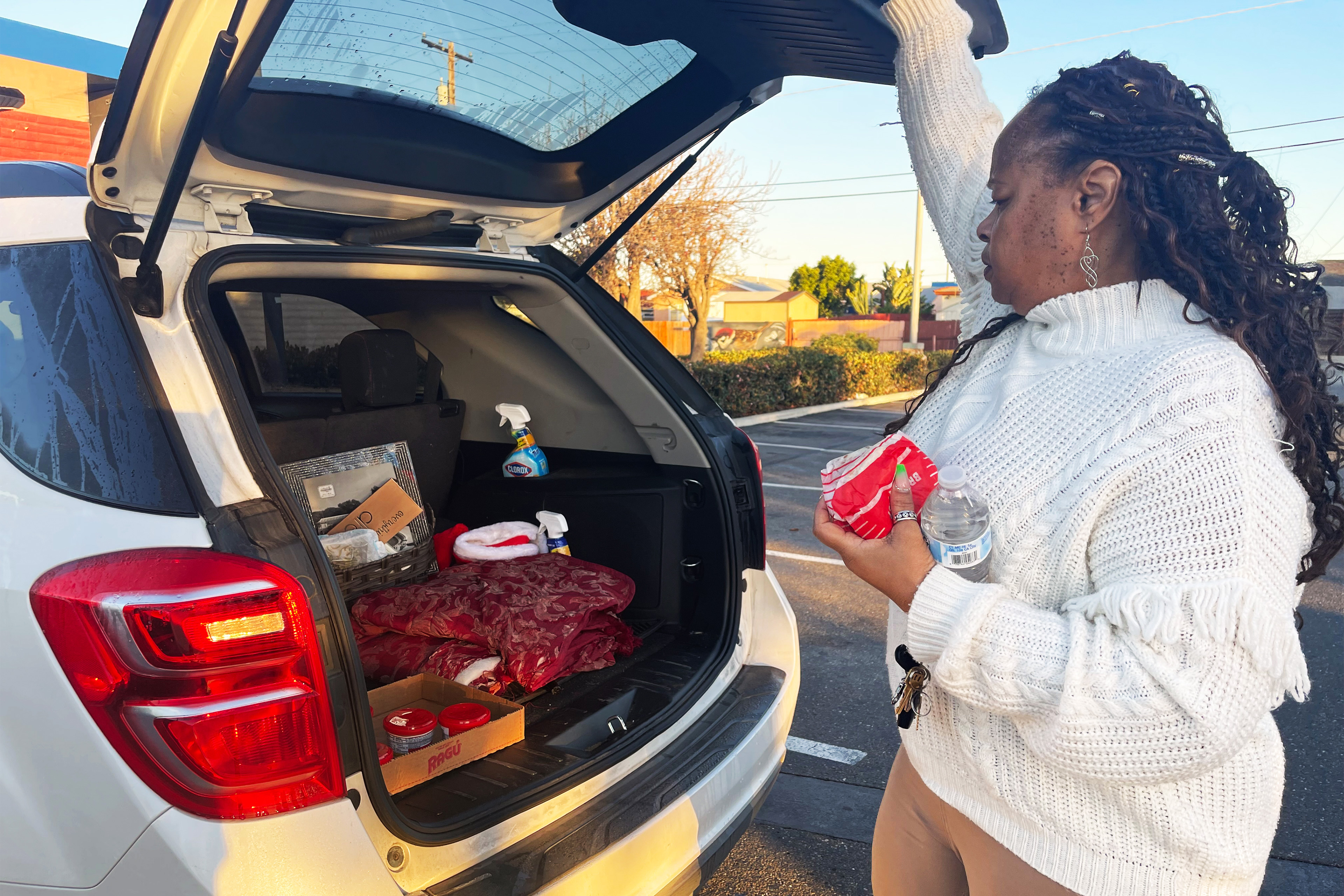
On a brisk morning in late February, Jeannine Nash pulled into the drive-thru of a Jack in the Box in Chula Vista, just south of San Diego. She dug in her wallet to find $8.17 for 10 breakfast sandwiches to hand out to homeless people on her regular rounds visiting encampments.
“It helps me to come out here before work, to get an idea of what the needs are,” Nash said as she approached a nearby homeless woman slumped over on a sidewalk who had nothing with her but a brand-new walker and hospital discharge paperwork tucked in a plastic bag.
Nash is director of referrals for Serene Health, a for-profit health care company that is one of nearly 500 provider organizations being paid to link homeless people or those at risk with intensive case management, housing, and other services.
A recovering addict herself, Nash said her life experience has helped her connect with people living outside and struggling with substance use disorders. She figures out how to get those who appear resistant to accept services. “So many people are distrustful of authority,” said Nash, who has a son who is homeless.
“This is very, very dear to my heart,” Nash said. In her decades since becoming sober, she has gained deep experience getting the people most at risk of spiraling deeper into crisis into treatment beds and even apartments. She’s cultivated relationships with housing and nursing home agencies so she can quickly identify openings.
But her job comes with extraordinary challenges. She often has to level with people living outside, telling them there is simply nowhere for them to go. “There’s just not enough beds or housing out there,” she said. “And if you don’t have an income, it’s not going to happen.”
Nash handed the homeless woman in the doorway two sandwiches, coaxing her to eat. The woman, Christina Gallegos, 38, was suffering from extreme liver damage due to chronic drinking and had crawled the few blocks from Scripps Mercy Hospital in Chula Vista, where she was discharged the night before.
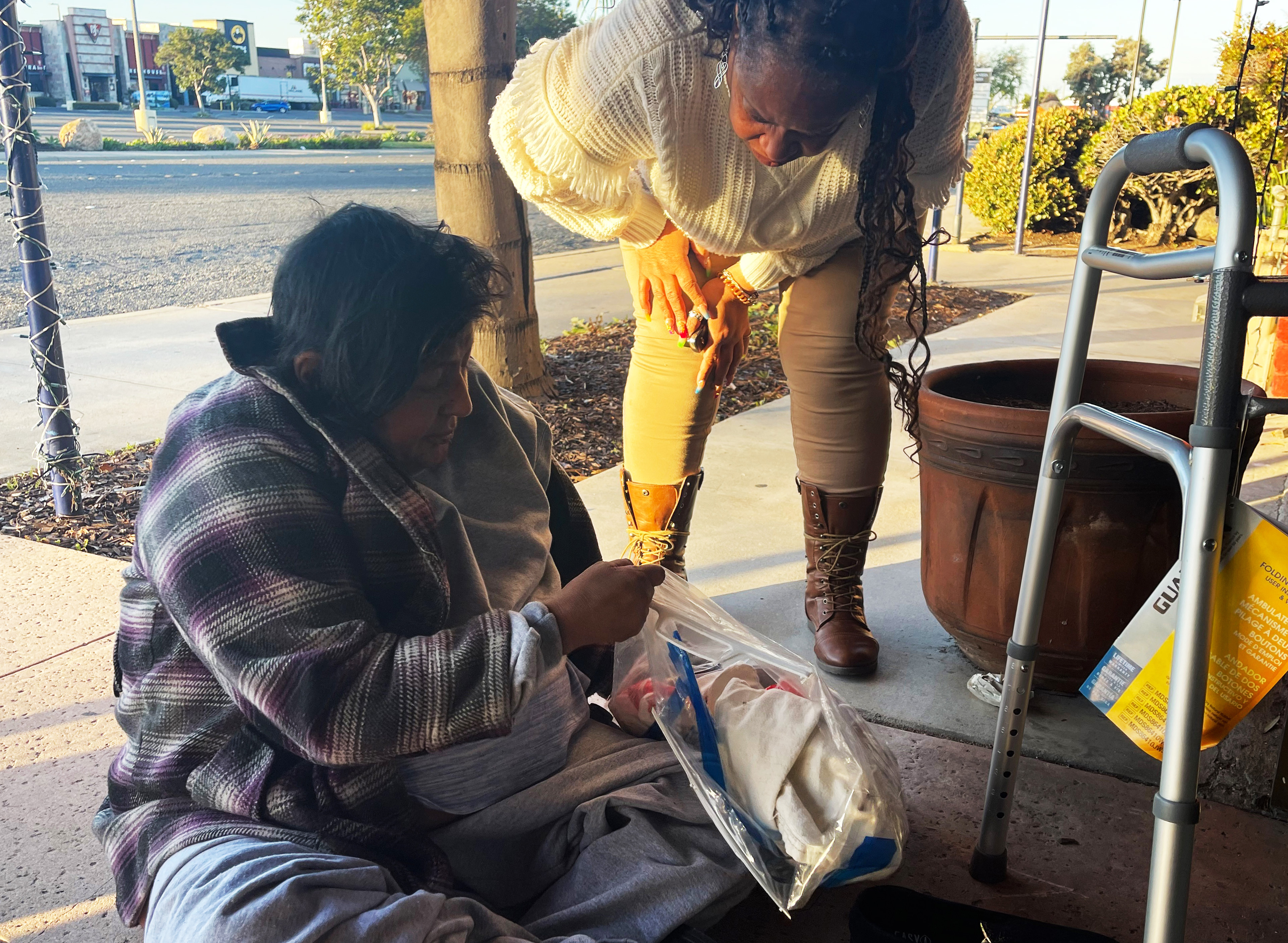
She had been in the emergency room, her hospital discharge paperwork showed — one of several ER trips she’d made in the past month. She was given the walker but couldn’t walk and dragged it into a doorway for shelter.
“We see this all the time. It’s getting really bad,” Nash said, texting her contacts to find a bed for Gallegos. “She’s definitely eligible. It’s just finding somewhere for her to go that is going to be hard.”
Gallegos has Medi-Cal but hasn’t been enrolled in the new benefits California is offering. She was among an estimated 8,500 homeless people identified in San Diego County in 2022, a 10% increase since 2020.
San Diego County is massive and populous, and while homeless encampments permeate suburban enclaves like Chula Vista, homeless people are largely clustered in San Diego’s downtown neighborhood and its parks.
One popular place to pitch a tent is Balboa Park near the San Diego Zoo. Its canyons and sprawling green lawns are peppered with tent communities, whose inhabitants plead for help from community groups. Many hang on to business cards from homeless outreach workers in hopes of scoring a shelter bed or permanent housing. While some people do get housing, many feel as if outreach efforts amount to broken promises.

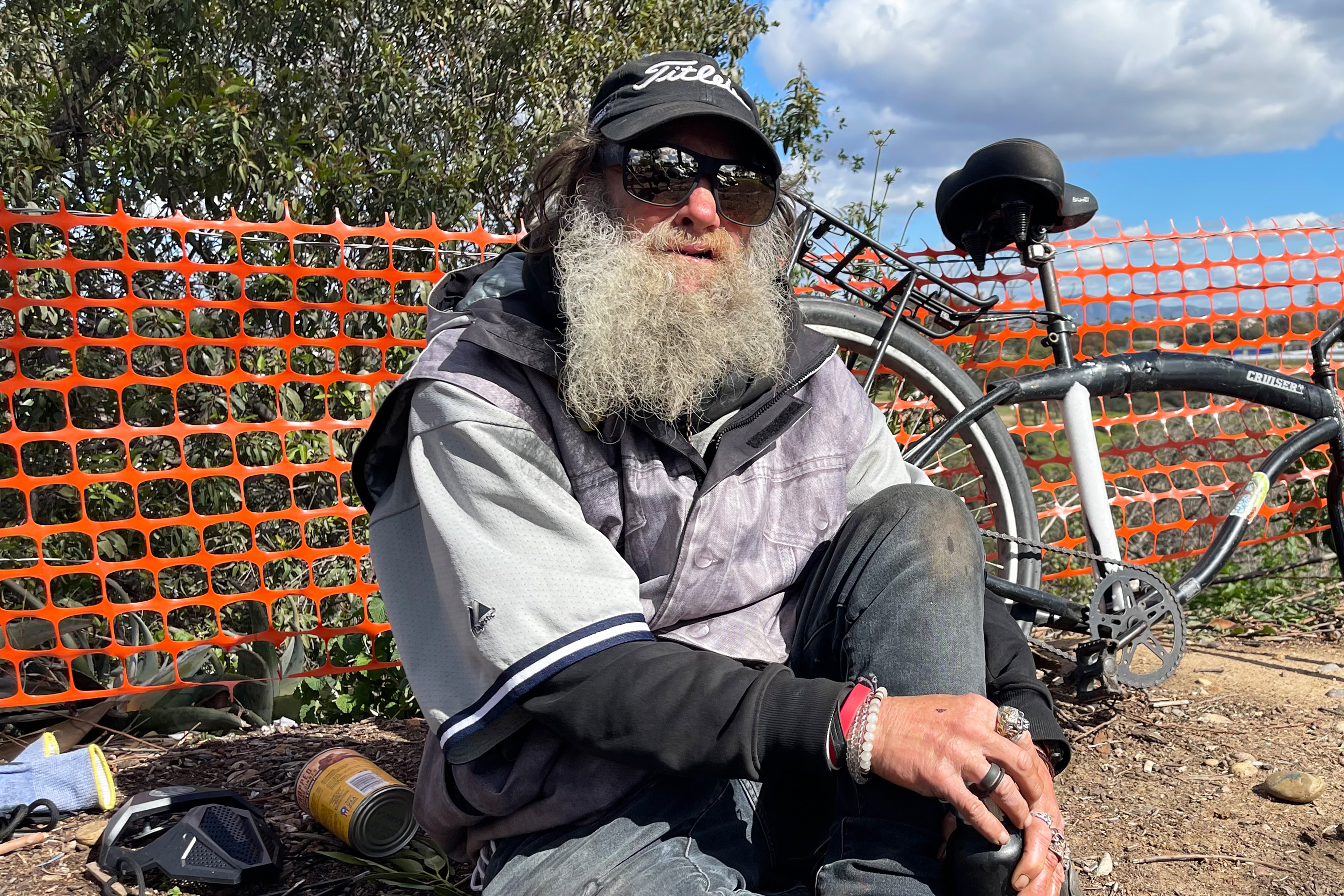
One man, David Lloyd, pulled from his pocket a phone number for an outreach worker from the homeless services provider PATH, who told him that he was on a waiting list for housing but that he could be waiting in the queue for years.
“It’s a big list,” said Lloyd, 66. “I just want to get off the streets. I’m tired of the cops harassing me all the time.”
Cally Wood, 35, said she is addicted to fentanyl and has been on the waiting list for housing for more than a year. “It just feels really impossible,” she said. “There’s nothing affordable.”
Health insurance executives, including Martha Santana-Chin, Medi-Cal president for Health Net in California, said Medi-Cal managed-care plans are making progress in helping get people off the streets and into services. Yet she acknowledged the initial rollout falls short.
“We just don’t have the housing supply that we need,” Santana-Chin said, “to be confident that all of these folks who need support and services are going to get permanently placed.”
Hampered by Sweeps
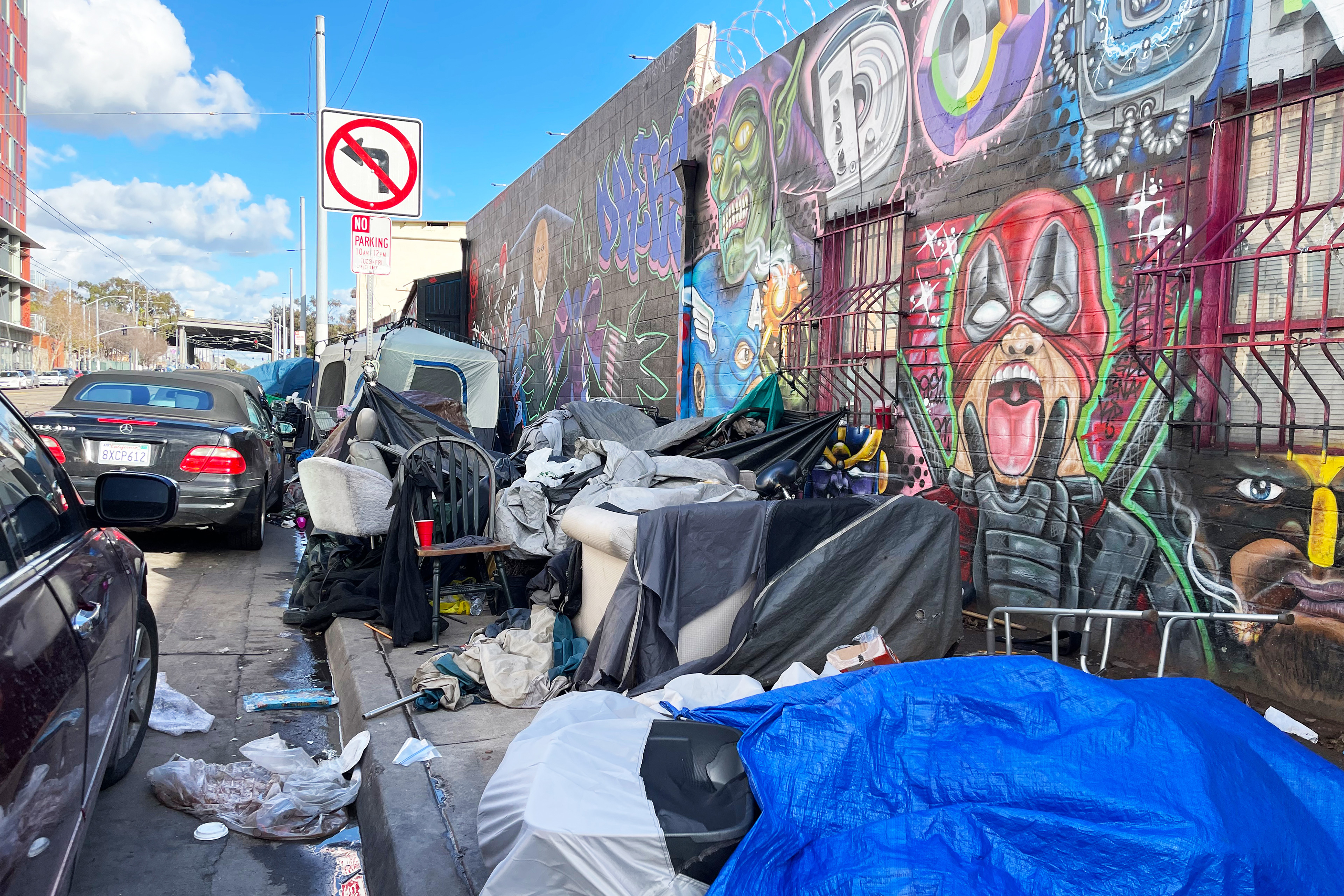
Across the region, sweeps of homeless encampments are common and becoming part of everyday life for people living outside. Deteriorating and unsanitary conditions on the streets fuel public frustration.
Newsom has ratcheted up the practice of clearing encampments, arguing that people dealing with homelessness should not be allowed to live outdoors, despite a dearth of alternatives. He’s allocating state funding to cities and counties to remove tents from streets and sidewalks and move people into any shelter or housing available. San Diego Mayor Todd Gloria, also a Democrat, is unapologetic about adopting the approach.
“We’re doing the cleanups that are necessary for public safety,” Gloria told KFF Health News. “These conditions are unsanitary, and it puts people’s health and safety at risk, and it leads to people dying. Some people disagree with me under the guise of caring for these individuals, but the sidewalk is not a home.”
Outreach workers on the ground, however, say the enforcement crackdown only makes their jobs harder. One of the most critical goals of the new Medi-Cal initiative is to regularly visit people on the streets, build relationships with them, and help them with health care needs, all while preparing them for housing — if it becomes available.
“This really takes a lot of time. Sometimes you start with just bringing someone socks or a bottle of water. It can take 70 encounters for someone to accept our help,” said Andrea Karrer, an outreach worker with PATH. “But that time is what allows you to build trust with someone, and when they have to constantly move, you have to find that person, and sometimes start all over.”
And the disruptions ultimately cause people without housing to get sicker and visit the ER more often, she and other outreach workers said.
“When you have to move every two or three days, getting to the doctor or staying on medication is not the biggest priority. You’re in survival mode,” Karrer said.
A Labor-Intensive Effort
Serene Health is one of hundreds of providers enrolling Medi-Cal patients into intensive case management. Together, they have signed up 108,000 patients statewide so far, according to California’s Department of Health Care Services, which administers Medi-Cal. An additional 28,000 are receiving the new housing services such as security deposit payments and help identifying affordable housing.
“A lot of the stuff we’re doing is just really new to health care,” said Jacey Cooper, the state’s Medicaid director. She said that health insurers are offering housing services in all 58 counties, yet she acknowledged that the need exceeds capacity.
“It takes time for that infrastructure to come to fruition,” Cooper said of the challenge of identifying housing for Medi-Cal patients who frequent hospital ERs. “We are in a massive education moment of even making sure people understand who’s eligible and how to refer, and educating the entire delivery system, from hospitals to providers.”
Meanwhile, Newsom is asking the Biden administration for permission to add another housing benefit that would cover up to six months of direct rent payments.
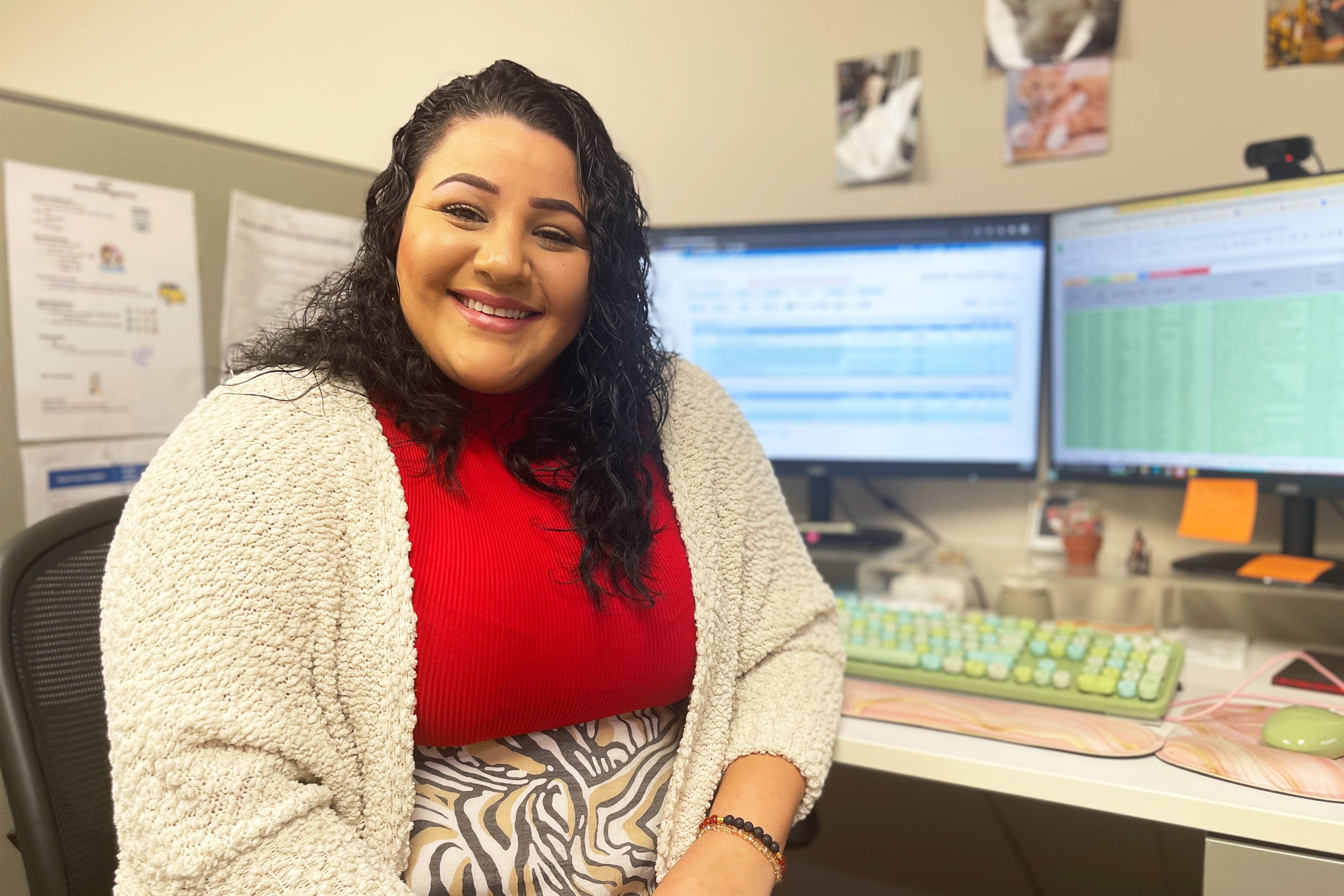
Veronica Ortiz, a lead care manager for Serene Health, has Craig McEwen on her roster of about 60 patients — a large caseload that is difficult to manage.
But Ortiz bubbles with compassion and energy and said working with patients like McEwen has given her even more drive to make a difference. The work is arduous, but McEwen is quickly becoming more independent, she said.
“When we come into their lives, we’re strangers, so we have to spend a lot of time meeting face-to-face with people and helping with anything they need, otherwise they’re not going to trust us.”
But help didn’t come fast enough for Donna Fontenot, a San Diego County resident who is being evicted from her apartment this month. Her landlord told her she had to leave following repeated ER trips, hospitalizations, and skilled nursing home stays stemming from an initial fall in 2022 that left her in a wheelchair.
“I’m petrified and absolutely panicking, I have nowhere to go,” Fontenot said. With one hospitalization alone costing an average of $18,000 in California, Fontenot, who is on Medi-Cal, has racked up high health care costs.
She has been hospitalized eight times since March 2022, she said. And on five occasions, her injuries to her feet and legs were so extreme that she needed placement in a nursing home.
Yet her Medi-Cal insurer, the San Diego-based Community Health Group, instituted a rule that to qualify for some housing services, she must have a child under 18. So she isn’t receiving housing assistance that could help her. She is, however, enrolled in intensive case management. But she was not aware of that until KFF Health News informed her.
“I feel like I won the lottery,” she said. “Is it going to help me?”

Her care manager hasn’t been as involved in her life as Ortiz has been with McEwen. Fontenot continues to search on her own for housing, and recently asked to be switched into Serene Health to get more hands-on assistance. “I’ve never needed help like this before. I feel so broken,” she said in tears. “Where am I going to go?”
Today, Ortiz is helping McEwen search for housing. She also has focused on helping him get his heart condition under control and find more stable work.
In March, he landed a job as a security guard patrolling sporting events, including at football stadiums. And he scored a hard-to-get surgery appointment for late this month to help unclog the arteries in his heart.
“Before Veronica, I was waiting to die. I was eating and drinking to die. But she showed up for me. Somebody cared about me. And that gave me the courage to share with her what my dream would be,” McEwen said. “I thought I needed football to be loved — then I’d be worth it.
“But I know now that my true purpose is to be of service and to be there for my daughter. I decided to get back on the field, instead of sitting on the sidelines.”
